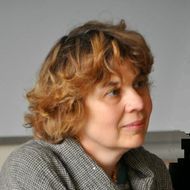- A
- A
- A
- ABC
- ABC
- ABC
- ąÉ
- ąÉ
- ąÉ
- ąÉ
- ąÉ
- HSE University
- Faculties
- Faculty of Humanities
- School of Linguistics
- News
- Lecture 'Possession in North Saami: Rich Morphology in Competition with an Analytic Construction' by Laura Janda
The School of Linguistics was founded in December 2014. Today, the School offers undergraduate and graduate programs in theoretical and computational linguistics. Linguistics as it is taught and researched at the School does not simply involve mastering foreign languages. Rather, it is the science of language and the methods of its modeling. Research groups in the School of Linguistics study typology, socio-linguistics and areal linguistics, corpus linguistics and lexicography, ancient languages and the history of languages. The School is also developing linguistic technologies and electronic resources: corpora, training simulators, dictionaries, thesauruses, and tools for digital storage and processing of written texts.
Digital Humanities
Bangkok: Association for Computational Linguistics, 2024.
Bursov K., Slioussar N.
Discourse Processes. 2025. Vol. 62. No. 3. P. 155-176.
In bk.: BivalTyp: Typological database of bivalent verbs and their encoding frames. .
arxiv.org. Computer Science. Cornell University, 2024

Lecture 'Possession in North Saami: Rich Morphology in Competition with an Analytic Construction' by Laura Janda

On May 13 a lecture 'Possession in North Saami: Rich Morphology in Competition with an┬ĀAnalytic Construction'┬Āby Laura Janda (the University of Troms├Ė, Norway) took place at HSE. The event was organized by the┬ĀSchool of Linguistics.
Abstract
North Saami (a Finno-Ugric language spoken by about 20,000 people in Northern Scandinavia) is replacing the use of possessive suffixes on nouns with an analytic construction. Our data (>30K examples culled from >10M words) track this change through time and parameters of syntax, semantics, frequency, genre, and geography. Since this change follows an S-curve, the most important factor should be differential weighting of the two linguistic variants. Although language change is unquestionably different from biological evolution, we challenge the assertion that it must be driven by social values alone. We find evidence of both inherent and socially conditioned fitness values. The innovative variant may be inherently more fit because it has a wider syntactic and semantic range and is indispensable, whereas its competitor can always be replaced. Furthermore, intense pressure on this minority language conditions a fitness advantage for the innovative construction, which is morphologically simpler. There is evidence that the possessive suffix is being reinterpreted as a vocative derivational morpheme.┬Ā
Video of the lecture (Youtube)
- About
- About
- Key Figures & Facts
- Sustainability at HSE University
- Faculties & Departments
- International Partnerships
- Faculty & Staff
- HSE Buildings
- HSE University for Persons with Disabilities
- Public Enquiries
- Studies
- Admissions
- Programme Catalogue
- Undergraduate
- Graduate
- Exchange Programmes
- Summer Schools
- Semester in Moscow
- Business Internship
- © HSE University 1993–2025 Contacts Copyright Privacy Policy Site Map
- Edit

